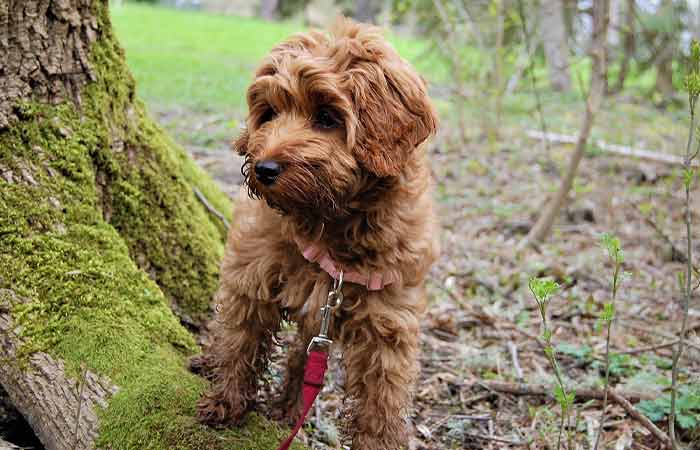The fascinating thing about a mixed puppy breed is the unpredictability of how it will be once it grows. Even with the knowledge of its parents and other genetic factors, you can’t really be accurate with the outcome. Nonetheless, there are a few things you can do to get a clue.
To determine the size of a mixed breed canine, observe certain features of the dog such as the paws, presence of loose skin, appetite, and weight gain. You can also do calculations to predict the height and weight of the puppy once it grows.
This is just the tip of the iceberg, below is a detailed guide on how and what you can do to get an idea of the size. Let’s begin!
Hints to tell the Possible Size
There are three things you can do to tell how big your mixed breed can get.
- Breed Knowledge – learning about the parentage and the genetics behind the breed’s parents.
- Features – we all know some dogs show signs of how giant they will be from as early as six months
- Calculations – the height and weight calculations can tell you if you’re looking at a small, medium, large, or giant adult dog.
Breed Knowledge
To understand the growth cycle of any mixed breed, you have to look into its parentage. Who are their parents? How big were their parents? Did the mixed breed come purely from pure breeds?
This information is crucial to understand as it can guide you to know at least where your dog ranges. There are four weight classes for dogs;
- Small – they weigh under 20 pounds
- Medium – they weigh between 20 and 60 pounds.
- Large – they weigh between 60 to 130 pounds.
- Giant – they weigh over 120 pounds
Further Reading: World’s Largest Dog Breeds
From here, you should know that small dogs reach their full size at six months, medium to large dogs peak after 12 months to around the 15th month, and giant dogs after two years. Therefore, if you don’t notice any growth after six months, you’ll probably have a small adult dog, unless there are underlying health issues.
Knowing about the breed’s parents can guide you in a lot of ways as you can predict the maximum size the dog will grow. This keeps you aware of its needs.
You could visit the veterinarian to also guide you about the type of mixed-breed you have and maybe give you an idea if it’s parents. That is in case you don’t know about the breed’s lineage or background.

Features
After learning about the breed, there are a few features that can guide you on knowing how big the mixed pup can get.
- The paws – a puppy with a large paw say three inches more often than not grows into a large or giant dog, and vice versa. Unless the dog is a miniature dog such as a bulldog that has big paws but a small body. This, however, isn’t a full-proof prediction.
- The legs – if the puppy has strong, heavy-boned legs, they will have a huge body to carry. Small paws then mean fine bones and short limbs as seen with a chihuahua. Again, there are exceptions to the rule as with the case with greyhounds that have skinny legs and fine bones but very tall.
- Skin – wrinkly skin on a puppy could mean the pup will grow large enough for the skin to fit snugly. Unless the pup will have wrinkly skin like some Mastiffs, bulldogs, and the Shar-Pei.
Other features you can look into are the coat of the pup. The color and length can give you an idea of the type of mixed pup you have which can then help you predict its height and weight. A good example is an Afghan Hound that has long silky hair. Its pup could tell you the dog will grow into a tall dog medium to large-sized dog.
Other physical attributes you can look at are the type of ears, floppy, erect, rose, button, or more.

Calculations
Lastly, we can look at the mathematical aspect of it. With a few prediction calculations, we can guess just how big the hybrid pup can grow. The main factor we’re looking at is weight.
If you know the pup’s age, then you can estimate their weight and height once they grow older. By use of some equations and tracking of weight, you have a good chance of being right.
You should know, the weight of puppies doubles by their one week of age. So after birth, the weight of your pup should be twice as heavy by the next week. After the first week, your pup’s weight will increase by five to ten percent each day. The exact percentage depends on its diet.
Let’s begin with the first calculation;
Weight Tracking
We shall use the weight of the dog at 6 weeks since after that the speed of growth has stabilized.
For small dogs, simply double the weight at six weeks and double the weight again. This is because toy dogs grow very fast and reach optimal weight by six months.
Example – three pounds at six weeks
3×2×2 = 12 pounds
That’s approximately the weight of many toy dogs including Cavadoodle, Cavachons, and more.
For medium to large-sized dogs, take the 5 to 10 percentile and add cumulatively to get the final weight. This isn’t a very reliable measure as most dogs have growth spurts between eight to 16 weeks. In this case, calculate how much the puppy gains in a week and multiple by 52 to estimate how big it will be in a year once all factors are constant.
Start by calculating the growth rate then the adult weight.
Growth rate = Current weight in lbs/age in weeks.
Adult weight = Growth x 52.
A dog is 12 pounds by the 12th week = 12/12 to give you one.
1× 52 weeks= 52 pounds
This milestone calculation is the best as it comes closest to the final weight seeing as the pup is kept under the same diet until it becomes an adult. Hence, the growth rate is also the same every week.
Theory Calculations
In theory, there are a few equations you can use to get you an estimated weight of the dog.
- Adult weight of a small breed = 4 x weight at six weeks.
- Adult weight of a medium to large breed = 2.5 x weight at 14 weeks.
- Adult weight of a large to giant breed = 2 x weight at 16 weeks.
Alternatively,
Follow these equations;
Take the weight of your small breed pup at six weeks, medium at 14, and large at 24 weeks.
Small breed = age at six weeks ×2×2
Medium breed = age at 14 weeks ×2, then add half of its age at 14 weeks again.
( For example, 24 pounds at 14 weeks*
24 ×2 + 12 = 60 pounds
Large to Giant Breeds = age at six months ×2
Tips to Pick the Best Mixed Breed Pup
- Always inquire about health-related considerations. Mixed breeds can inherit abnormalities and health problems from either of their breeding parents. Therefore, always be in the know about them.
- Choose a mixed breed pup that appears to have familiar characteristics. While it’s hard to predict how they will be once they come of age, familiar characteristics mean you can easily handle them.
- Consider the pricing – breeders can often price the best of the best higher than other pups. That’s why some may be a little under $1500 while others are over $3500.
- Because you’re unsure about the pup, go to a trusted breeder who can give you the full rundown of the puppy including information about its parents.
- Try to go for a low maintenance pup as hybrid breeds come with a lot of uncertainty.

Interesting Facts about Mixed Breed Dogs
- You will probably not know how your dog will look like or weight until it’s all grown up. Generic factors are not the only things that come into play when it comes to the growth of the dog.
- Hybrids often have the “hybrid vigor” which makes them healthier than purebreds. This is just a generic advantage that allows the dog’s gene to reject faulty genes including serious long-term illnesses.
- Most mixed dogs are rejects and will often be found at shelters. Mixing of breeds started in the early 1990s, up to now, not all hybrid dogs are recognized by the Kennel Club.
- They often have unpredictable temperaments and character traits. Some may even have completely different genes compared to those of their parents.
- Crossbreeds are said to have a longer lifespan. Lots of them will have a lifespan between 13 to 20 years. That’s a lot for dog years.
- There is National Mutt Day on Dec. 2 to celebrate, and hopefully, save the lives
- Hybrid dogs are quite easy to train and better at socializing with children, strangers, and other dogs.
- A high percentage of these mixed breed dogs are actually cheaper to get than pure breeds. Yes, they’re healthier but most people don’t like the uncertainty they come with making them cost less.






